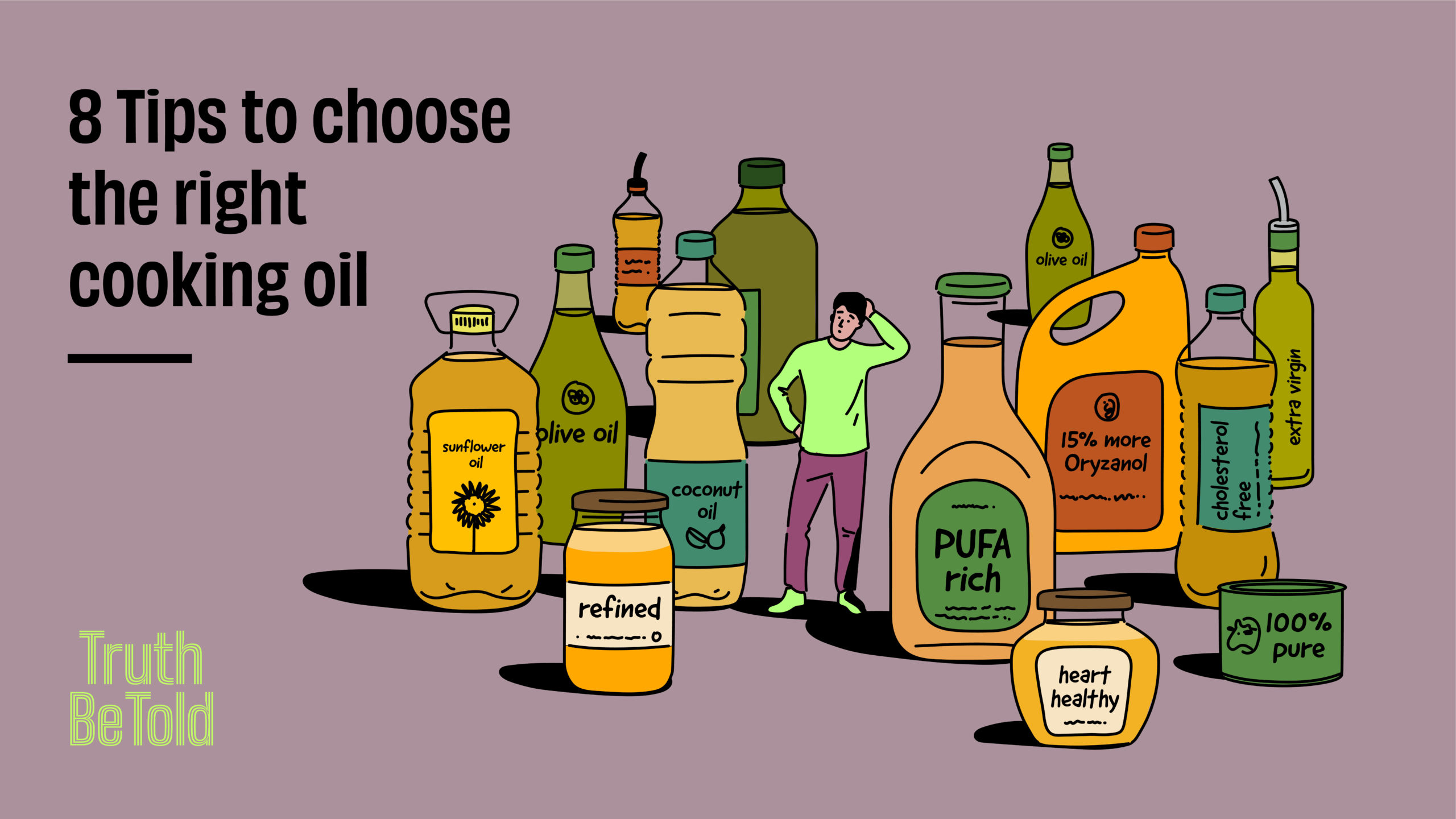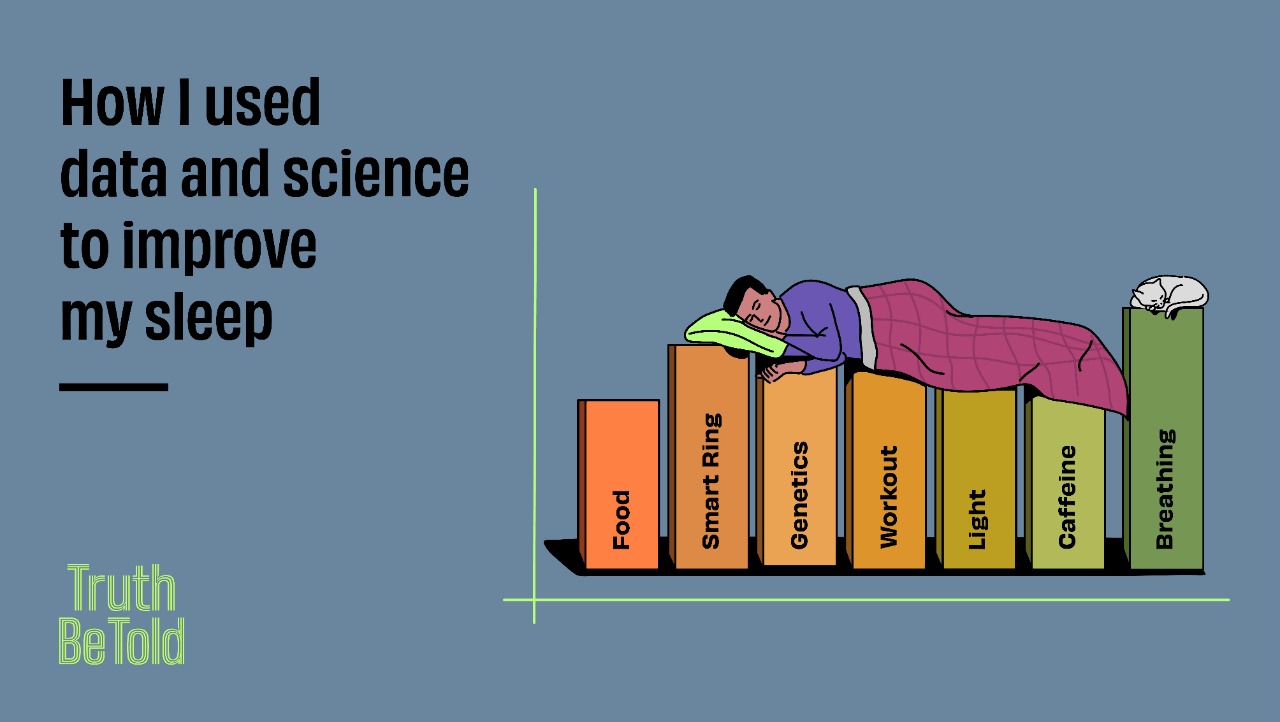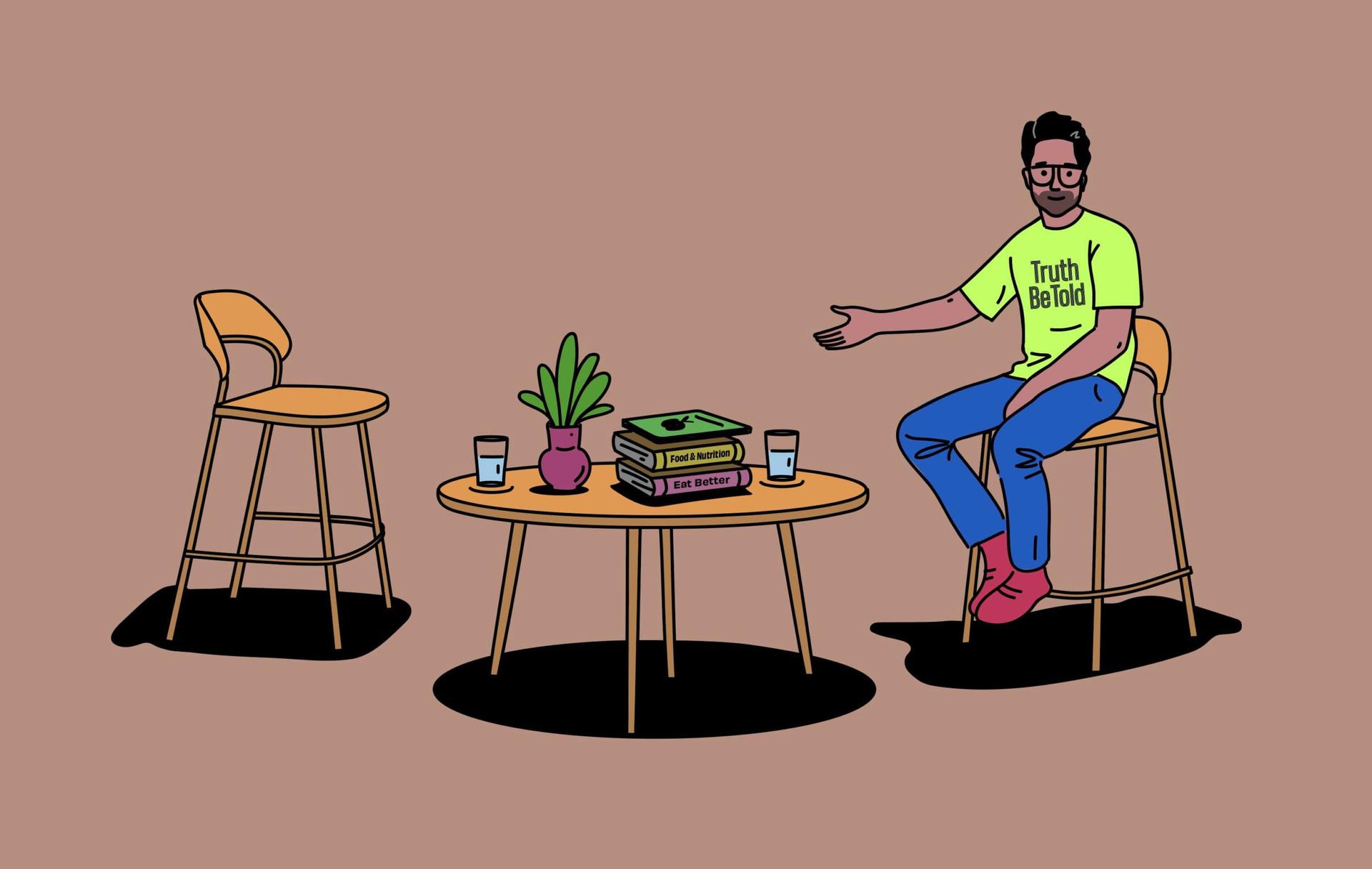Letters to Editor: Reader Response 01
You shared. We respond!
The most trustworthy source of food and
fitness journalism in the country.
Hello friends,
Samarth here — Truth Be Told’s Editor, and I want to direct your attention to a declaration we made in our manifesto:
“The publication is rooted in our community. We only want to serve our readers. We want to inform and delight, but we also want to challenge and provoke — truth-seeking and conformity don’t go together.
So we will optimise our resources to cultivate a trusting relationship.
Enough trust that even if you disagree with our conclusions — it will happen, it’s inevitable — you’ll value us for what we’ve started and find our attempt valuable enough to feel responsible for what we do.
We are counting on you. Hold us accountable. Alert us if you see us drifting off our mission. Please tell us how we can serve you better.”
Shashank, The Whole Truth’s founder, didn’t write those words casually. We mean it.
TBT is not a platform for one-way communication: we write, you read — the end. So twentieth century. Not our jam.
Truth Be Told was created to cultivate a two-way conversation: what you say matters as much as what we publish. And from all the lovely letters I have received from you, I can see you guys get it. Thank you. (And yay!)
We asked ourselves: why should your comments, insights and questions be restricted to our inboxes? They should reach the TBT community and move the conversation forward.
In that spirit, we will publish a “readers’ edition” once in a while to amplify your voice. I handpicked a few and sharing them today with a few thoughts.
We can’t publish everything — space constraints, I hope you understand — but we take each very seriously. So please keep ‘em coming. And if you have a moment, please fill out this short feedback form to tell us what we can do better.
PS: Some comments have been slightly edited for clarity and brevity.

💌 Kapil Thakur: “I really loved the framework. However, it only covers physical health and wellness. It would be great if you could also add a point or two covering mental wellness.”
Truth Be Told ✍️: We got this feedback from so many of you. And it’s spot on: Our piece was narrowly focused on the idea of ‘physical health’ — but ‘health’ means much more. Time for a confession: Shashank wrote a short section on mental health in the first draft. I edited it out — not because it matters any less; both are closely related. Just that I wanted the piece to focus on physical health comprehensively. We will talk about mental health and more in future.
💌 Sandesh Chopade: “For all the different ways in which we quantify and study health, the only correct way to improve personal health is the way which works for a person. Shashank has perfectly captured the essence of a healthy lifestyle in ten aspects — it is the perfect food for thought (pun intended!)
But if you look at the comprehensive definitions of health, it’s quite multi-pronged: physical (which includes diet, exercise and rest), mental, emotional, social and spiritual.
The WHO definition — health is “a state of complete physical, mental and social well-being and not merely the absence of disease or infirmity” — covers three of these five. I wrote a little summary piece on my blog a while ago.
Health can be complete only with well-being in all these aspects. While diet and exercise largely contribute to physical and mental fitness, the discourse on health must simultaneously focus on social, emotional, and spiritual well-being determinants.
We are increasingly becoming aware of the latter, and it is very likely that as technological advancements in healthcare tackle disease head-on, humanity as a whole will be forced into this discourse sooner than later.”
Truth Be Told ✍️: So insightful. Thank you, Sandesh. Do read his blog post.
💌 Kiran: “I have been a slow eater for two years unless not in a hurry to go somewhere. I have realized one thing from experience: when I used to eat fast, I hardly chewed the food properly and tended to overeat. I swallowed mostly and later felt overwhelmed.
Now, I eat slowly till I’m less than full, and I can relate my experience to this post. When we eat slowly, we chew well, food is digested better, and you feel more energetic.”
Truth Be Told ✍️: Totally. Kiran’s experience points to the larger idea of ‘mindful eating’ — meaning the food we eat should have our fullest attention. From Harvard Health:
“Eating mindfully means that you are using all of your physical and emotional senses to experience and enjoy the food choices you make. This helps to increase gratitude for food, which can improve the overall eating experience. Mindful eating encourages one to make choices that will be satisfying and nourishing to the body. However, it discourages “judging” one’s eating behaviors as there are different types of eating experiences. As we become more aware of our eating habits, we may take steps towards behavior changes that will benefit ourselves and our environment.”
They published an eight-point guide to mindful eating. Do take a look.

💌 Upayan: “I had gone through that ‘starving yourself and gaining it all back phase’ before actually realising that easy come is easy go. Gradually, I set up a regular exercise regime (completely free hand for personal reasons) based on bodyweight exercises like pushups/planks/lunges and cardio, along with a balanced and sustainable diet.
At 6 feet, I wanted to be at 70-75 kilos. I needed to lose around 11-12 kg. Not much, maybe, yet, but finally losing and building a lifestyle that never lets me gain back. It gave me a lot of confidence. I have trekked and walked long distances through forests and could finally do all the outdoor activities that I always wanted to do — but was held back by extra weight.
I related to every word where you described how the mental struggle is far more difficult than the actual physical effort.”
Truth Be Told ✍️: Wonderful. Thank you for sharing your story.
💌 Ameya: “Thanks for this nicely balanced piece. But you missed some important stuff around weight loss that is even more important than all these things: genes, set weight, and bad science connecting weight with lifestyle diseases.”
Truth Be Told ✍️: Any informed discussion around obesity and weight loss need diverse views. Honestly, I feel overwhelmed with all the ‘why we get fat’ theories explaining what is true and what is not true. As the editor of TBT, one of my personal learning goals is to get more clarity on these debates, understand the different arguments, and publishing nuanced analyses.
So in my piece, I wanted to focus only on those points where I could say things with authority from personal experience.
For example, on genetics and obesity, I have read conflicting stuff. I don’t know — so I am in talks with an expert to write a story for us on the genes-environment impact on our health. We will get there.
For now, if you want to explore further, I will direct you to Ameya’s excellent podcast “Fat. So?” where she and her friend Pallavi talk about being fat — the joy and pain, the struggles and victories of self-love. (Insta here.)
I asked her to share links to a few select episodes which cover the themes my piece didn’t explore. Here is one where the duo chat about their many horrible experiences with doctors and the healthcare system, the second one on food and metabolism, and the third one on movement, exercise and weight loss. She also did a video on a topic I can’t wrap my head around (but I want to): ‘health at every size’. Happy listening!
💌 Leo: “I’ve never experienced this personally, but it gives me a lot of perspective about what others on the journey go through. I would love to read a similar version about gaining weight — because I’ve been that skinny kid who just doesn’t eat enough lol.”
Truth Be Told ✍️: Haha, we hear you. Added to our never-ending long list of story ideas.

💌 Sarah: “The article was informative but missed the big takeaway: what oil do I use for my everyday cooking? Only idli, dosa and Bengali food are mentioned, with sesame oil, which won’t work for my usual dal-sabzi. And what about my meats? That big chunk of info, which is the main point of reading it, is missing.”
Truth Be Told ✍️: Thank you for this question. It does not matter if you are cooking meat or vegetables. The choice of oil depends on the type of cuisine and the temperature range you are exposing the food to (to bake, fry, sauté, etc.). If you use oil for a deep-fried Punjabi chicken recipe, feel free to use ghee.
If you are using a Kerala sautéed meat recipe, use coconut oil. And of course, for most Indian dal-sabzis, unrefined sesame oil, coconut oil, extra virgin olive oil or ghee works, based on your preference and the flavour profile of the dish. I hope this helps.
💌 Shraddha: “I have always been told not to use extra virgin olive oil for Indian cooking or frying due to its low smoke point. But you mention using it for frying. Is the low smoking point a myth?”
💌 Prateek: “Not sure about using extra virgin olive oil for deep frying. Have always read, at multiple sources, that extra light olive oil is best suitable for that.”
Truth Be Told ✍️: This seems to be a common doubt. So let’s clarify. First, as Swetha explained in her article:
“Smoke point is essential for deciding the utility of oil because different cooking methods need different temperatures: baking (180 °C), frying (190 °C), sauteing (163 °C). Oils with a higher smoke point can be used to achieve high temperatures necessary for crunchy, crispy deep fried textures.”
Unrefined extra virgin olive oil (EVOO) has a smoke point of 207 °C — meaning it can be used for deep frying (at 190 °C).
Swetha tells us that most people use EVOO only for salads — and not for frying — because it is quite expensive and its volatile aromas are lost in higher temperatures. But in Italy, traditionally, EVOO has been used for frying. You can read more details on this blog.

💌 Dr Kavita: “You have forgotten the most important thing which can cause disturbed sleep. Airway restriction leads to obstructive sleep apnoea or OSA. Veteran musician Bappi Lahiri died from this condition.
Basically, oxygen supply gets restricted as tongue gets thrown back and blocks your airway during sleep. If not detected and diagnosed in time, it can prove fatal.
Snoring and grinding of teeth are common symptoms. Very often, your dentist first detects it by looking at your mouth. History reveals that the patient is not feeling fresh even after prolonged hours of sleep, feels groggy and irritable throughout the day and wakes up with headaches. If this is you, seek help at once.”
Truth Be Told ✍️: Thank you, Dr Kavita, for this invaluable insight. Ankush wrote about the importance of the right breathing technique (through your nose) while sleeping in his TBT article, but this additional context adds more depth to this point.
💌 Akshay: “I want to highlight my experience with mouth taping. It genuinely has been the most amazing discovery of my life.
Who should try it: I have been doing this for about a month now and started it because of these symptoms (that have now drastically reduced): snoring, bad breath, drooling and frequently waking up in the middle of the night.
What should one use: Although Ankush mentioned a few (expensive) suggestions, I have found that a simple medical tape at your nearest pharmacy does the trick. Costs just around Rs 30.
How should one tape: A simple vertical seal in the middle of the mouth works best for me if one uses a normal medical tape. The horizontal seal tends to slip off from the mouth.
Also, I recommend that people be okay if they cannot successfully keep the tape on for the night. It took around 3-4 days to get used to the experience.
I am not from a medical background, so all this is from personal experience only.”
Truth Be Told ✍️: Wow, thank you, Akshay, for these deets. Very helpful.
More from Truth Be Told
The Definitive Guide to Smart Food Shopping
I solved the mystery of the afternoon slump with CGM
Eight swaps to eat better everyday
Diwali indulgence won’t make you fat
What spikes your blood glucose?
Is your body ageing gracefully?
Should you count calories?
My experiments with sleep
8 tips to choose the right cooking oil
Why weight loss is a rigged game
You can’t be ‘healthy’, if you don’t know what it means
Food and fitness journalism is broken. We are fixing it.

